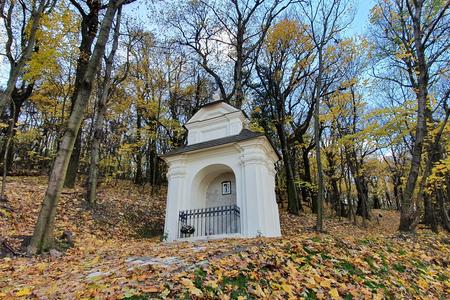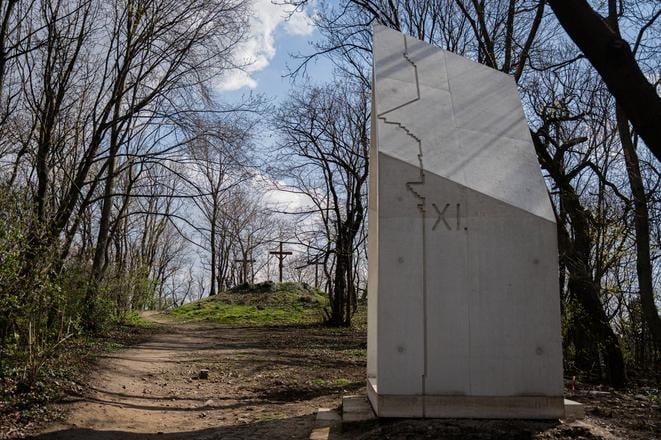Bratislava’s Calvary dates back to 1694 – 50 years before the construction of its counterpart in Banská Štiavnica.
But unlike its more famous cousin, it did not survive the communist regime, during which it was all but destroyed. By the time of the Velvet Revolution in 1989 all that remained of the capital’s once splendid Baroque Calvary was part of one chapel of the Stations of the Cross and a rotting wooden cross with a bronze Christ above a dilapidated staircase.
Today, though, it is transformed.
Following the restoration of Golgotha and the Ecce Homo station, subtle new white stations made of fine concrete were added last year to the Calvary Hill, based on plans by architects Michaela Hantabalová and Juraj Hantabal.
Designed in a minimalist style, their size and shape corresponds to the original Baroque Calvary.
Hantabal Architekti Architectural Studio
The studio was founded by Juraj and Michaela Hantabal in 2009. Their design philosophy is minimalism. They have won several awards for their work, including Slovakia’s most prestigious architectural award, the C.E.Z.A.A.R., in 2011, for the Minergo residential complex, and again in 2020, for the Drotárska residential complex.
“The principle was to preserve what was left, to reconstruct everything that could be reconstructed, to build anew that which was no longer there, and to combine all these into a whole so that the New Stations of the Cross would be based on this place’s history,” Hantabalová explained to The Slovak Spectator.
Contemporary architecture
As they approached the restoration of Calvary, the husband and wife team had to decide which among three permitted methods of monument restoration they would use: replica, completion, or creation of the object anew.

“We could never again build a Calvary the way they built it in the Baroque period, with their technology. It would always have been just a copy. And we won’t do Disneyland,” said Hantabal.
Another reason for choosing contemporary architecture was that they wanted the fact of the Calvary’s destruction by the communist regime to be remembered.
“If we built copies of the stations, in a hundred years no one would remember that the Calvary was violently destroyed,” said Hantabal. “It’s also for future generations, who will be able to read all of this from it.”



 The New Stations of the Cross combine old and new. (source: Sme - Marko Erd)
The New Stations of the Cross combine old and new. (source: Sme - Marko Erd)